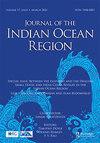Impact of China’s Belt and Road Initiative on regional stability in South Asia
IF 1.3
Q2 AREA STUDIES
引用次数: 2
Abstract
ABSTRACT By focusing on domestic and geopolitical factors, this study aims to understand the impacts of China’s Belt and Road Initiative (BRI) on regional stability in South Asia. It critically examines China’s investments in Bangladesh, the Maldives, Nepal, Pakistan and Sri Lanka to understand how that impacts local economies and politics as well as the geopolitical climate considering the rivalry between China and India. As China seeks to promote alternatives for its partners to decrease their dependence on India and India-dominated institutions, there appears to be a negative impact of the geostrategic competition between China and India on South Asian regionalism. China’s economic influence varies and the evidence from Sri Lanka and Pakistan suggests that Beijing fully controls the deep seaports that it has built through BRI. While Beijing has engaged with a variety of political actors in the selected countries, it has not tried to influence domestic politics.中国“一带一路”倡议对南亚地区稳定的影响
摘要本研究旨在通过关注国内和地缘政治因素,了解中国“一带一路”倡议对南亚地区稳定的影响。它批判性地研究了中国在孟加拉国、马尔代夫、尼泊尔、巴基斯坦和斯里兰卡的投资,以了解这对当地经济和政治的影响,以及考虑到中国和印度之间的竞争的地缘政治气候。随着中国寻求为其合作伙伴推广替代方案,以减少对印度和印度主导的机构的依赖,中印之间的地缘战略竞争似乎对南亚区域主义产生了负面影响。中国的经济影响力各不相同,斯里兰卡和巴基斯坦的证据表明,北京完全控制了其通过“一带一路”倡议建造的深水港。尽管北京与选定国家的各种政治行为者进行了接触,但它并没有试图影响国内政治。
本文章由计算机程序翻译,如有差异,请以英文原文为准。
求助全文
约1分钟内获得全文
求助全文

 求助内容:
求助内容: 应助结果提醒方式:
应助结果提醒方式:


